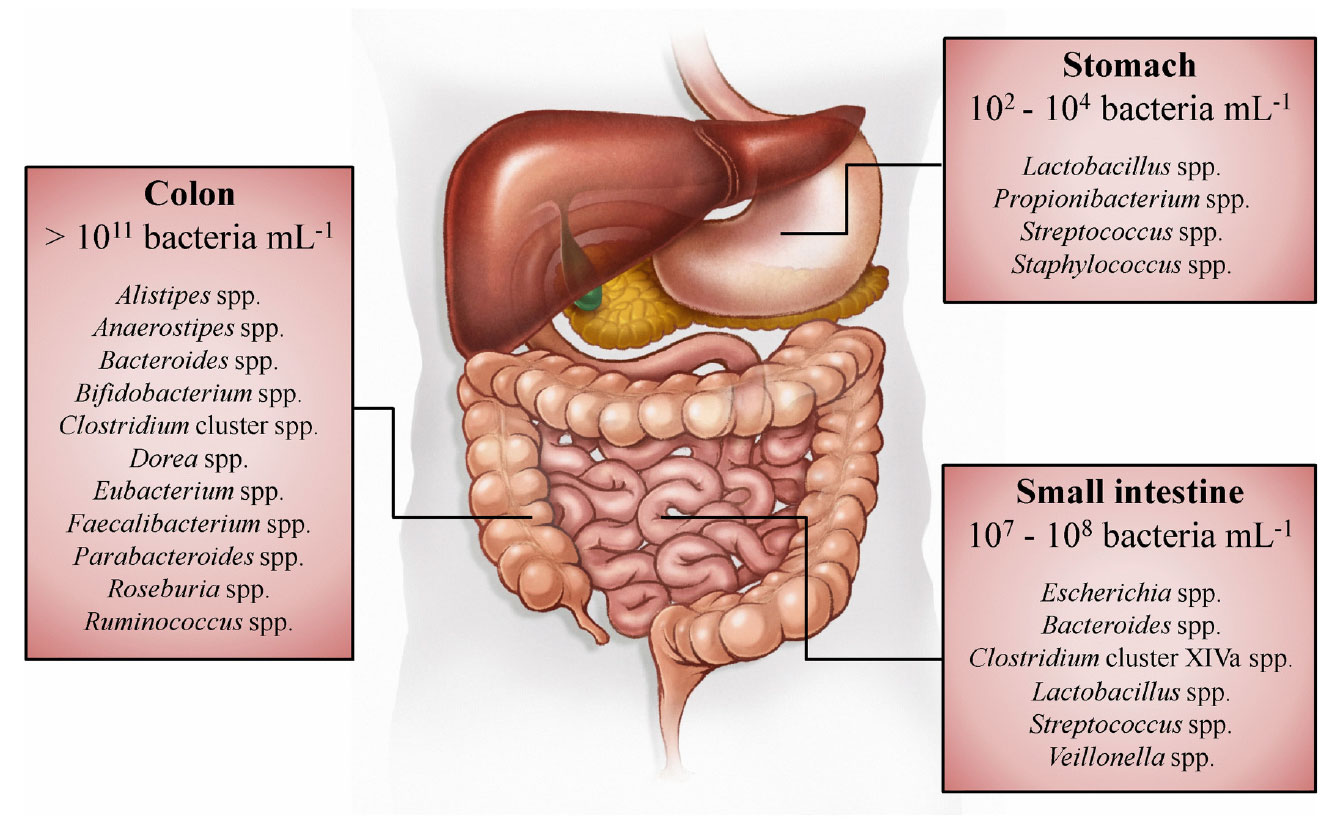With the increasing amount of evidence linking certain disorders of the human body to a disturbed gut microbiota, there is a growing interest for compounds that positively influence its composition and activity through diet. Besides the consumption of probiotics to stimulate favorable bacterial communities in the human gastrointestinal tract, prebiotics such as inulin-type fructans (ITF) and arabinoxylan-oligosaccharides (AXOS) can be consumed to increase the number of bifidobacteria in the colon. Several functions have been attributed to bifidobacteria, encompassing degradation of non-digestible carbohydrates, protection against pathogens, production of vitamin B, antioxidants, and conjugated linoleic acids, and stimulation of the immune system. During life, the numbers of bifidobacteria decrease from up to 90% of the total colon microbiota in vaginally delivered breast-fed infants to <5% in the colon of adults and they decrease even more in that of elderly as well as in patients with certain disorders such as antibiotic-associated diarrhea, inflammatory bowel disease, irritable bowel syndrome, obesity, allergies, and regressive autism. It has been suggested that the bifidogenic effects of ITF and AXOS are the result of strain-specific yet complementary carbohydrate degradation mechanisms within cooperating bifidobacterial consortia. Except for a bifidogenic effect, ITF and AXOS also have shown to cause a butyrogenic effect in the human colon, i.e., an enhancement of colon butyrate production. Butyrate is an essential metabolite in the human colon, as it is the preferred energy source for the colon epithelial cells, contributes to the maintenance of the gut barrier functions, and has immunomodulatory and anti-inflammatory properties. It has been shown that the butyrogenic effects of ITF and AXOS are the result of cross-feeding interactions between bifidobacteria and butyrate-producing colon bacteria, such as Faecalibacterium prausnitzii (clostridial cluster IV) and Anaerostipes, Eubacterium, and Roseburia species (clostridial cluster XIVa). These kinds of interactions possibly favor the co-existence of bifidobacterial strains with other bifidobacteria and with butyrate-producing colon bacteria in the human colon.
Bifidobacteria andButyrate-Producing Colon Bacteria:Importance and Strategies for TheirStimulation in the Human Gut
Spatial distribution and concentrations of bacteria along the gastrointestinal tract of humans
by Audrey Rivière, Marija Selak, D • February 27, 2020
overall rating:
my rating:
log in to rate

